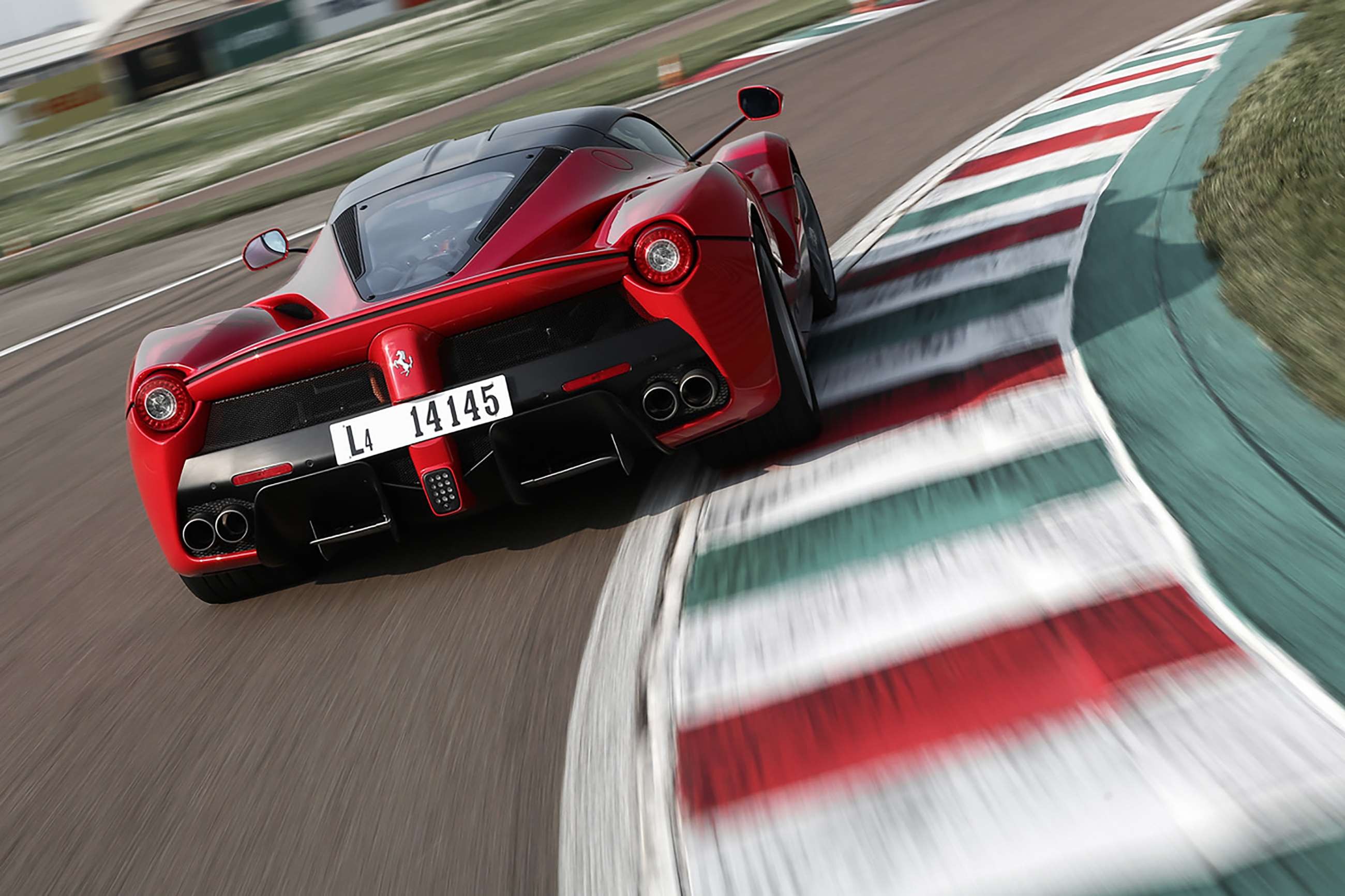While discussions circulate about what’s next for Ferrari, it’s crucial to remember the benchmark set by the LaFerrari. It wasn’t just another limited-edition model; it was a paradigm shift, a vehicle that altered perceptions of what a road-going supercar could be. For many, including seasoned automotive critics, the LaFerrari didn’t just meet expectations, it shattered them, even surpassing the legendary Ferrari F40 in terms of driving exhilaration.
Image alt text: LaFerrari in vibrant red, speeding through Fiorano circuit during Goodwood event, showcasing its aerodynamic curves and powerful stance.
Prior to experiencing the LaFerrari, the F40 held an untouchable position as the pinnacle of driving pleasure. The McLaren F1 came close, offering technological prowess, but it lacked the raw, visceral connection that the F40 delivered, despite the older Ferrari being demonstrably slower. Many mid-engined Ferraris of the past flirted with the edge, offering thrilling performance right up to a point, beyond which they could become challenging. The F40, however, was a different beast altogether – seemingly untamed, yet surprisingly rewarding and almost an ally when pushed to its limits.
Then came the LaFerrari, changing the game entirely. When comparing the trio of hybrid hypercars – the LaFerrari, the Porsche 918 Spyder, and the McLaren P1 – their distinct characters emerged. The Porsche excelled in versatility, performing admirably across diverse driving conditions. The McLaren P1 arguably reigned supreme on the track, likely the quickest of the three on equal tires in a circuit setting. However, for sheer driving enjoyment and emotional engagement, the LaFerrari carved its own niche as the most captivating.
Image alt text: Side profile of the iconic LaFerrari at Goodwood, highlighting its sleek design, carbon fiber accents, and signature Ferrari red paint.
What made the LaFerrari so uniquely appealing was its surprisingly “old school” feel, a paradox considering its state-of-the-art hybrid technology and near-1000 horsepower output. While rivals like Porsche and McLaren overtly showcased their technological advancements, the LaFerrari felt remarkably pure and driver-focused. It lacked complex driving modes or the need for charging; it was simply a brutally fast, incredibly engaging machine that produced a truly unforgettable sound. Pushing the LaFerrari hard was an unadulterated joy, perhaps less planted than a P1 in outright grip, but infinitely more rewarding and fun, making any marginal difference in adhesion inconsequential.
Image alt text: LaFerrari in motion during a review at Goodwood, capturing its dynamic performance and the scenic backdrop of the Goodwood estate.
The LaFerrari remains Ferrari’s quintessential mid-engined V12 road car, an exclusive lineage if you disregard track-focused models adapted for road use or the technically flat-12 configurations of the Boxer and Testarossa. Looking ahead, the question arises whether the new generation of Ferrari supercars, like the SF90 with its turbo V8 and all-wheel-drive, can recapture the same level of driver involvement that the LaFerrari so masterfully delivered. Despite technological shifts, the legacy of LaFerrari as a driver’s car par excellence endures, setting a high bar for future Ferrari models.
